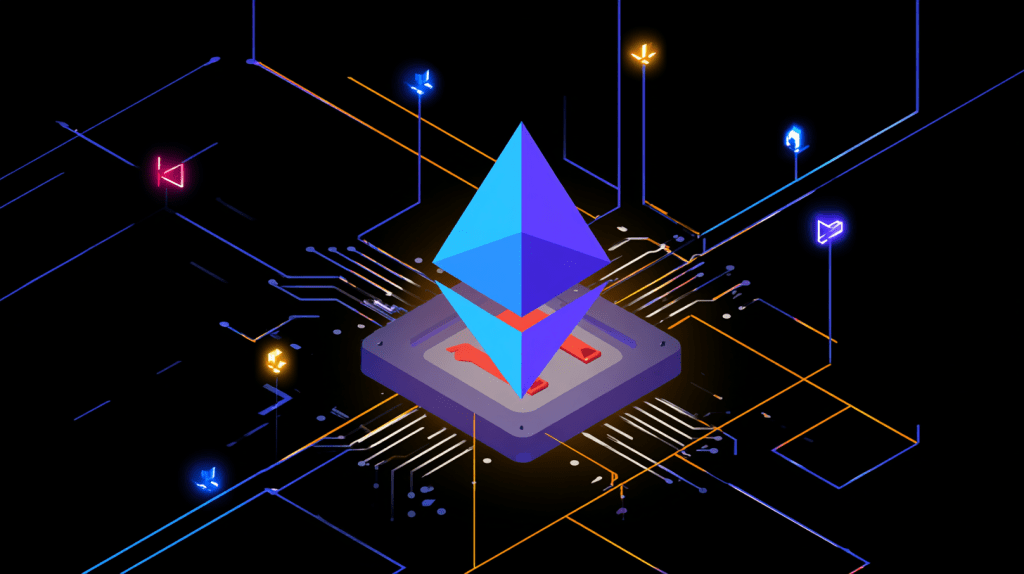Understanding blockchain technology requires grasping several fundamental concepts, and among the most crucial is the Ethereum Virtual Machine. This computational engine powers not just Ethereum but an entire ecosystem of decentralized applications spanning multiple networks. For anyone serious about cryptocurrency or Web3 development, knowing what is the ethereum virtual machine becomes essential.
Definition of the Ethereum Virtual Machine
The ethereum virtual machine serves as the runtime environment where smart contracts execute on the Ethereum network. Think of it as a global computer that processes code in a decentralized manner, with thousands of nodes worldwide running identical calculations simultaneously. The EVM definition encompasses both the software specifications that determine how code runs and the distributed network of machines implementing those rules.
What the EVM Does in Blockchain Networks
When someone asks what does the EVM do, the answer centers on execution. The evm ethereum processes every transaction, runs every smart contract, and updates every account balance across the network. It transforms written code into actionable operations that modify blockchain state in predictable, verifiable ways. Without this computational layer, Ethereum would be nothing more than a simple ledger recording transactions.
Why the EVM Is Called the “World Computer”
The term world computer Ethereum reflects an ambitious vision: a single, unified computing platform accessible to anyone, anywhere. Unlike traditional servers controlled by companies, this distributed machine operates across thousands of independent nodes. No single entity controls it, no government can shut it down, and anyone can deploy applications that run exactly as programmed without interference or downtime.
How the Ethereum Virtual Machine Works

The mechanics behind what is evm in crypto involve several interconnected processes working in harmony.
Smart Contracts and Bytecode Execution
Developers write smart contracts on EVM using languages like Solidity or Vyper. These human-readable programs then compile into EVM bytecode—low-level instructions the virtual machine understands. When users interact with these contracts, the bytecode executes across the network, with every node independently processing identical operations to reach consensus on outcomes.
Gas Fees and Transaction Processing
The evm crypto meaning includes understanding Ethereum gas fees, which measure computational work. Every operation costs gas, preventing spam and compensating validators for processing transactions. Complex operations consuming more resources cost more gas, creating economic incentives for efficient code. Users specify gas prices they’re willing to pay, with higher fees typically resulting in faster transaction confirmation.
Role of Nodes in Running the EVM
Thousands of nodes maintain the evm network, each running a complete copy of the virtual machine. When transactions arrive, nodes execute them independently, verifying results match other nodes’ calculations. This redundancy ensures security—manipulating outcomes would require controlling most nodes simultaneously, making attacks economically unfeasible for established networks.
Key Features of the EVM

Several characteristics distinguish this technology from traditional computing environments.
Decentralization and Security
The distributed nature of the evm blockchain eliminates single points of failure. Applications keep running even if thousands of nodes go offline. This resilience comes at a cost—slower processing and higher expenses compared to centralized servers—but provides unprecedented security and censorship resistance for critical applications.
Deterministic Execution
Given identical inputs, the EVM always produces identical outputs. This determinism ensures all nodes reach consensus without requiring direct communication about results. Smart contracts on EVM behave predictably, executing exactly as programmed regardless of which node processes them or when execution occurs.
Compatibility Across Ethereum-Based Chains
The evm chain concept extends beyond Ethereum itself. Any blockchain implementing EVM specifications can run contracts written for Ethereum with minimal or no modifications. This standardization created a massive ecosystem where developers write once and deploy anywhere compatible.
EVM-Compatible Blockchains
The specifications’ open nature spawned numerous networks leveraging this proven technology.
Layer-2 Solutions (Arbitrum, Optimism, Polygon)
EVM Layer-2 solutions address Ethereum’s scalability limitations by processing transactions off the main chain while inheriting its security. These networks dramatically reduce costs and increase throughput while maintaining compatibility with EVM-based dApps, allowing developers to scale applications without rewriting code.
EVM-Compatible Layer-1s (BNB Chain, Avalanche, Fantom)
Independent blockchains adopting EVM compatibility attract developers already familiar with Ethereum’s ecosystem. These EVM-compatible blockchains often offer faster transactions and lower fees than Ethereum mainnet, creating alternatives for applications prioritizing speed and cost over maximum decentralization.
Benefits of the Ethereum Virtual Machine

Understanding benefits of EVM explains why this technology achieved widespread adoption.
Developer-Friendly Environment
Extensive documentation, mature development tools, and countless tutorials make building EVM-based dApps accessible. Developers leverage familiar programming patterns, existing libraries, and battle-tested frameworks rather than learning entirely new systems from scratch.
Interoperability and Portability of dApps
EVM interoperability means applications deployed on one compatible chain can potentially migrate to others with minimal changes. This flexibility reduces vendor lock-in and enables applications to move toward networks better suited to their specific needs as requirements evolve.
Large Ecosystem and Tooling Support
The ethereum virtual machine explained includes understanding its massive developer ecosystem. Thousands of developers contribute tools, libraries, and resources that accelerate development. This network effect creates self-reinforcing growth where more developers attract more tools, which attract more developers.
Limitations of the EVM
Despite strengths, several limitations of EVM warrant acknowledgment.
Scalability Challenges
Processing everything across thousands of nodes limits throughput. Ethereum mainnet handles roughly 15-30 transactions per second—far below traditional payment networks. While Layer-2 solutions help, fundamental architecture constrains baseline capacity.
High Gas Costs
Network congestion drives Ethereum gas fees to painful levels during peak demand. Simple transactions sometimes cost dozens of dollars, pricing out smaller users and making certain applications economically unviable.
Security Risks in Smart Contracts
Code running on the EVM executes exactly as written—including bugs and vulnerabilities. Numerous hacks exploited smart contract flaws, draining millions from protocols. Once deployed, contracts often cannot be modified, making mistakes permanent and potentially catastrophic.
Future of the Ethereum Virtual Machine

Evolution continues as developers address current shortcomings.
Upgrades and Improvements with Ethereum 2.0
The Ethereum 2.0 and EVM future includes continued optimization and potential architectural changes. While recent upgrades improved security and predictability, work continues on further enhancing efficiency, reducing costs, and increasing throughput without sacrificing decentralization.
Expanding the Role of EVM Beyond Ethereum
The evm crypto meaning expands as more blockchains adopt compatibility. This standardization positions the EVM as potentially the dominant virtual machine for decentralized applications across multiple networks, similar to how x86 architecture dominated traditional computing.
Conclusion: Why the EVM Matters for Crypto and Web3
When people ask what does evm mean in crypto or what is an evm, they’re touching on foundational infrastructure enabling most decentralized applications. The ethereum virtual machine explained reveals technology that transformed blockchain from simple transaction ledgers into programmable platforms supporting complex applications. Understanding what is evm wallet compatibility, what evm network characteristics matter, and how this technology functions helps navigate the broader crypto ecosystem. Despite limitations, the EVM remains central to blockchain’s future, powering innovation that could reshape how we interact with digital systems.

